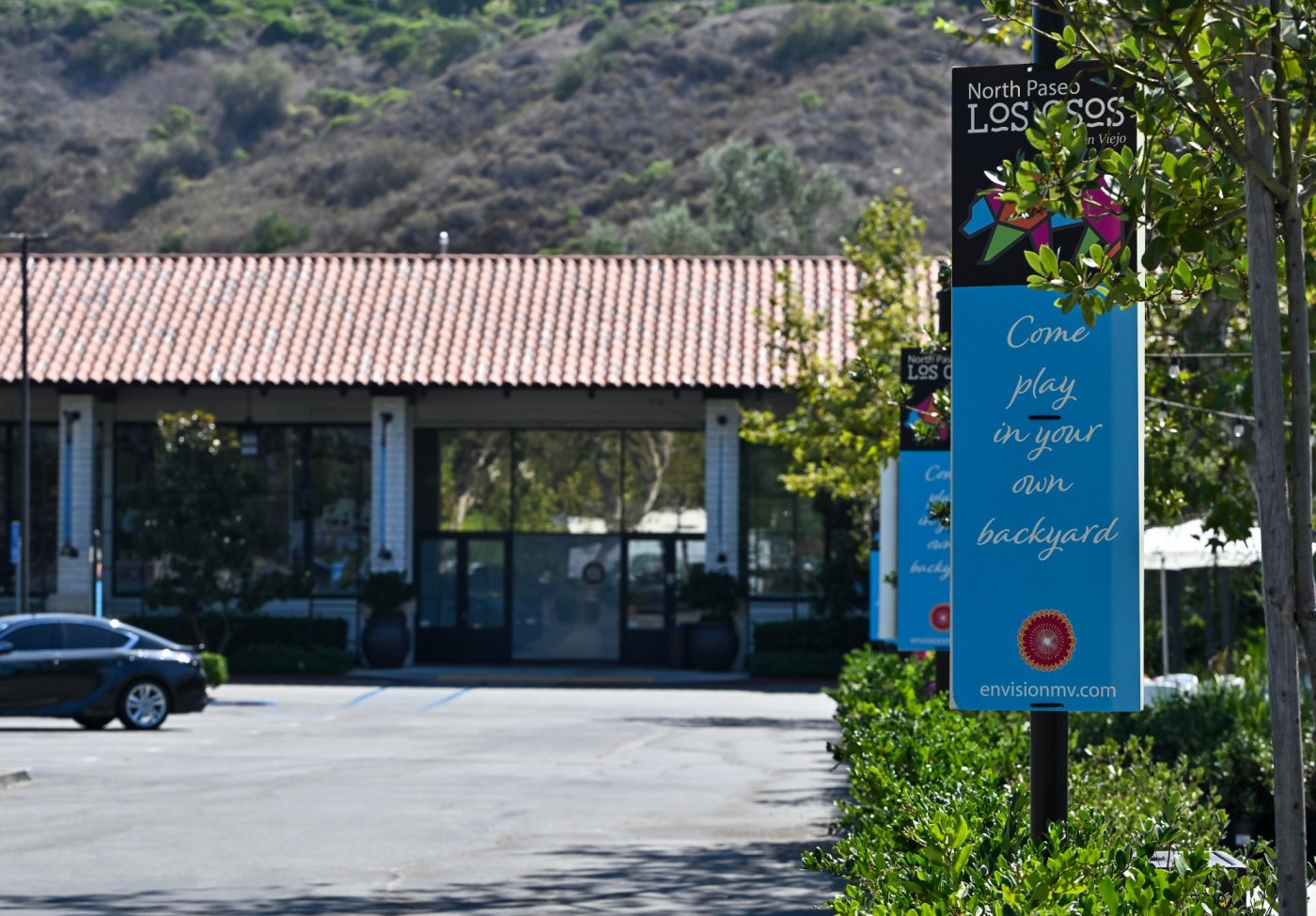Mission Viejo leaders have hit reset on a project intended to revitalize a 1970s-era shopping center across from City Hall and the library and reenergize the city’s core, with officials looking at whether the original plan still makes sense.
The city’s plan for its Los Osos Core Area, approved in 2023, was to create a shopping, entertainment and event plaza, connecting to the Civic Center and Oso Creek area and the trail that runs through it all. The city had gone so far as to seek a contractor to start construction on a first phase.
“The conditions are so different than they were when this design came out that, is it the right use anymore,” Mission Viejo Mayor Bob Ruesch said city leaders are now asking. “We had very little response back, so it made sense to put this out once again and see if there were different people or there are different ideas that make it useful.”
“We want the best experience for our residents and visitors that we can afford,” he added. “We don’t want to use those funds and put that energy into it without the best possible assurances that we’re doing the right thing.”
Recently, the City Council issued a new call for proposals from potential developers for the first phase of the overall project that includes the 3.3-acre former Stein Mart building in the Village Center off Marguerite Parkway and La Paz Road. The now vacant building was purchased by the city in 2021 for $12 million.
The focus now is on how to get energy back into the aging shopping plaza — several of its larger anchors, including Michael’s, Party City and Big Lots, have closed — without going forward full bore on the overall city hub plan, which would have connected both sides of Oso Creek with the center.
Proposals from interested parties are due by mid-October and include opportunities for redevelopment, restaurants, retail, entertainment, professional offices and service-oriented businesses, city officials said.
Looking at new and possibly even different options than what the original plan called for is prompted because of an initial lack of interest from bidders, along with evolving market conditions, the store closures, and issues from the greater project area being divided up among at least 11 parcel owners, Ruesch said.
The first phase of the original project had been on course to break ground by the end of the year, but in May, the council paused plans to give the city more time to evaluate bids.
At that time, the city had received only two bids and was still evaluating the closures of the center’s other tenants.
What concerns Ruesch now, he said, are the smaller businesses still there that had relied on the larger box stores to bring in more foot traffic.
Now, the center is used to hold the monthly farmer’s market, and there have been some night events, which Ruesch said always get great support, indicating to him that there is interest in the city to go somewhere local.
“We have to look a little closer because of those challenges,” he said. “We don’t want to spend $6 million on phase one and not justify the expense. The original project was fantastic, but we want to make sure we’re being wise.”
